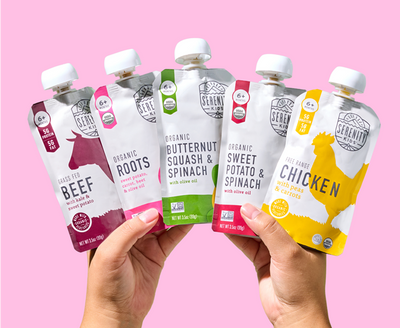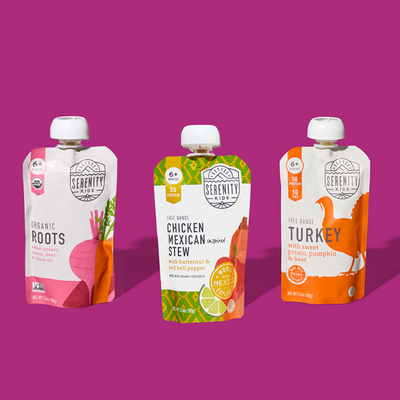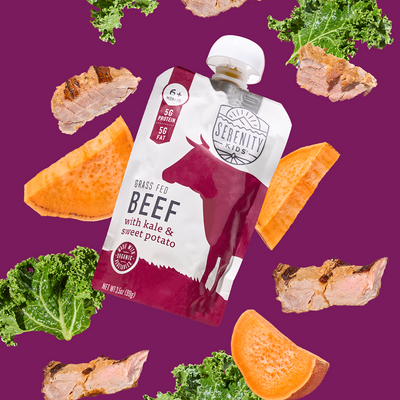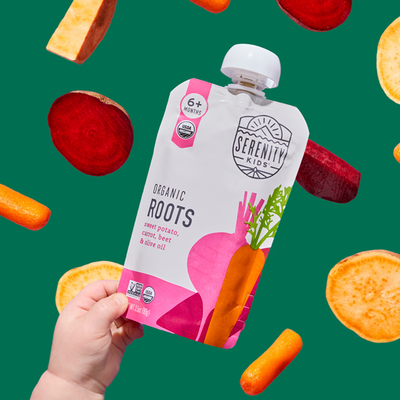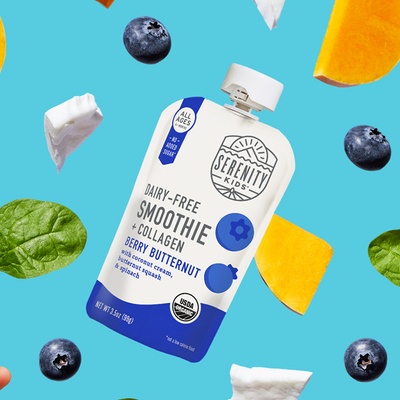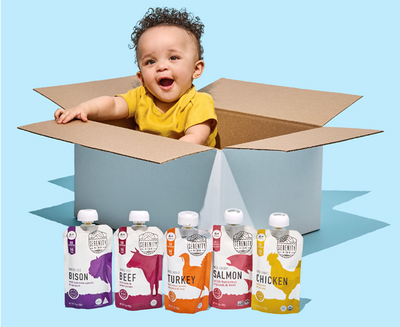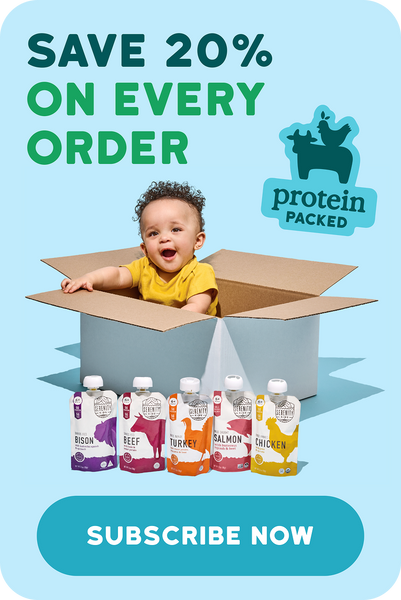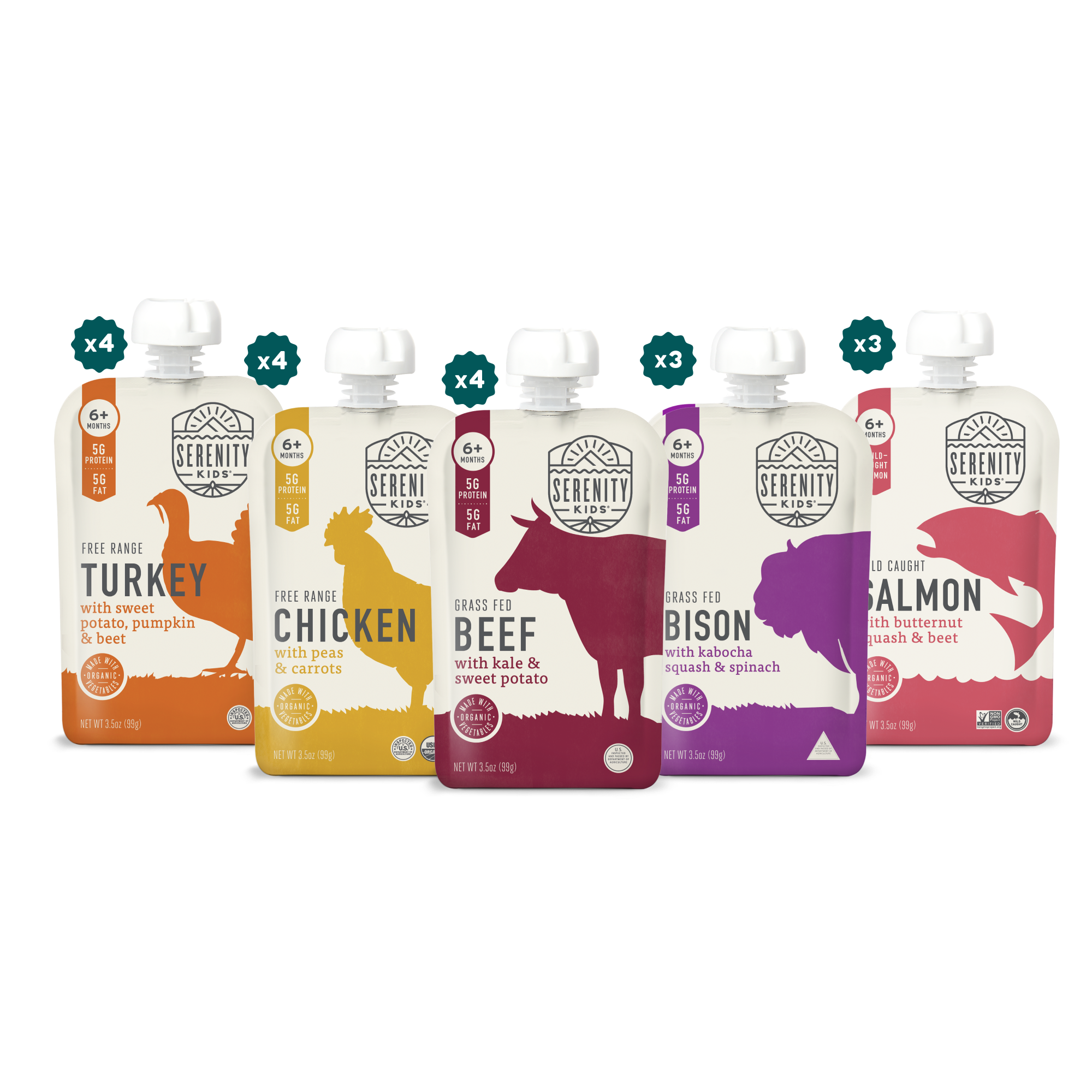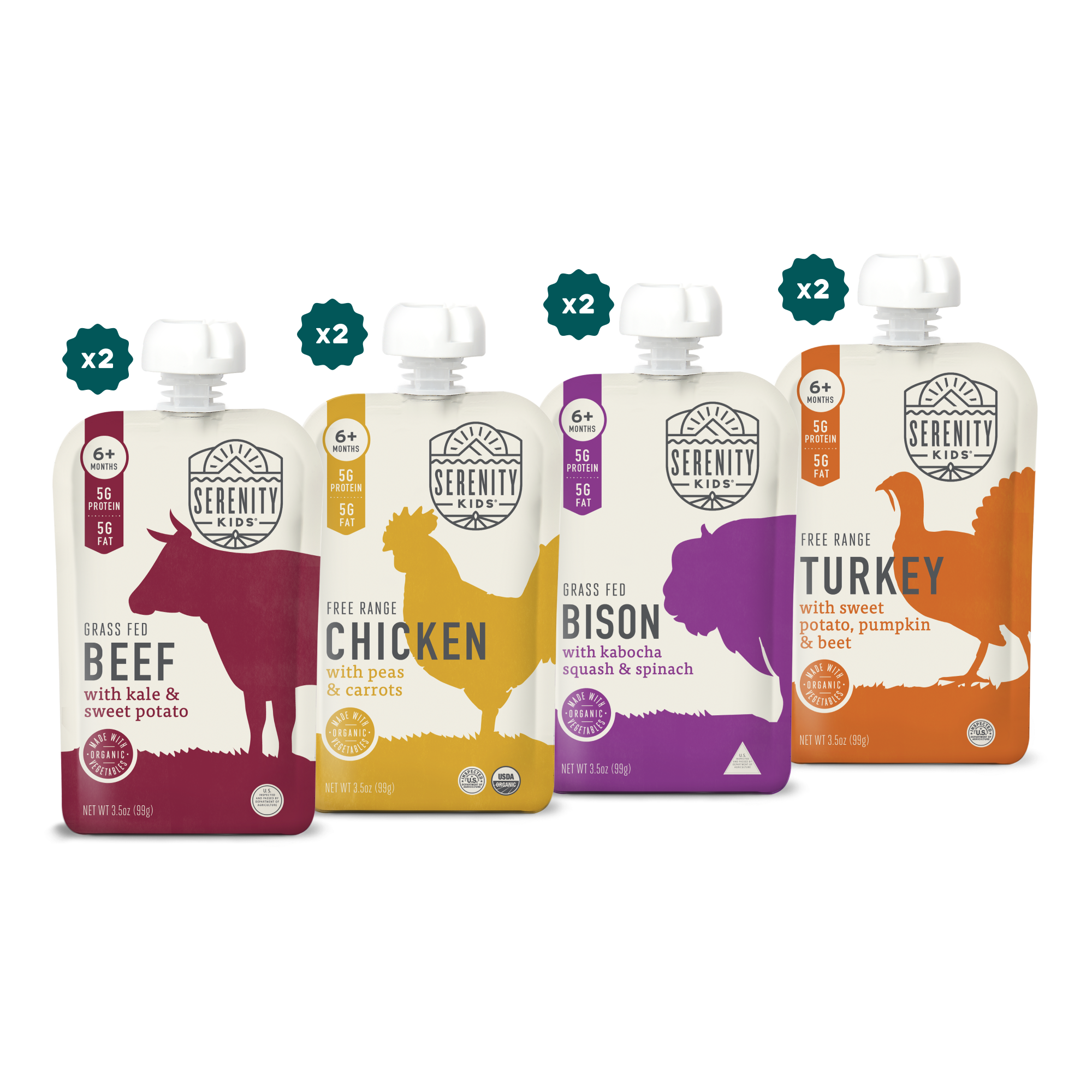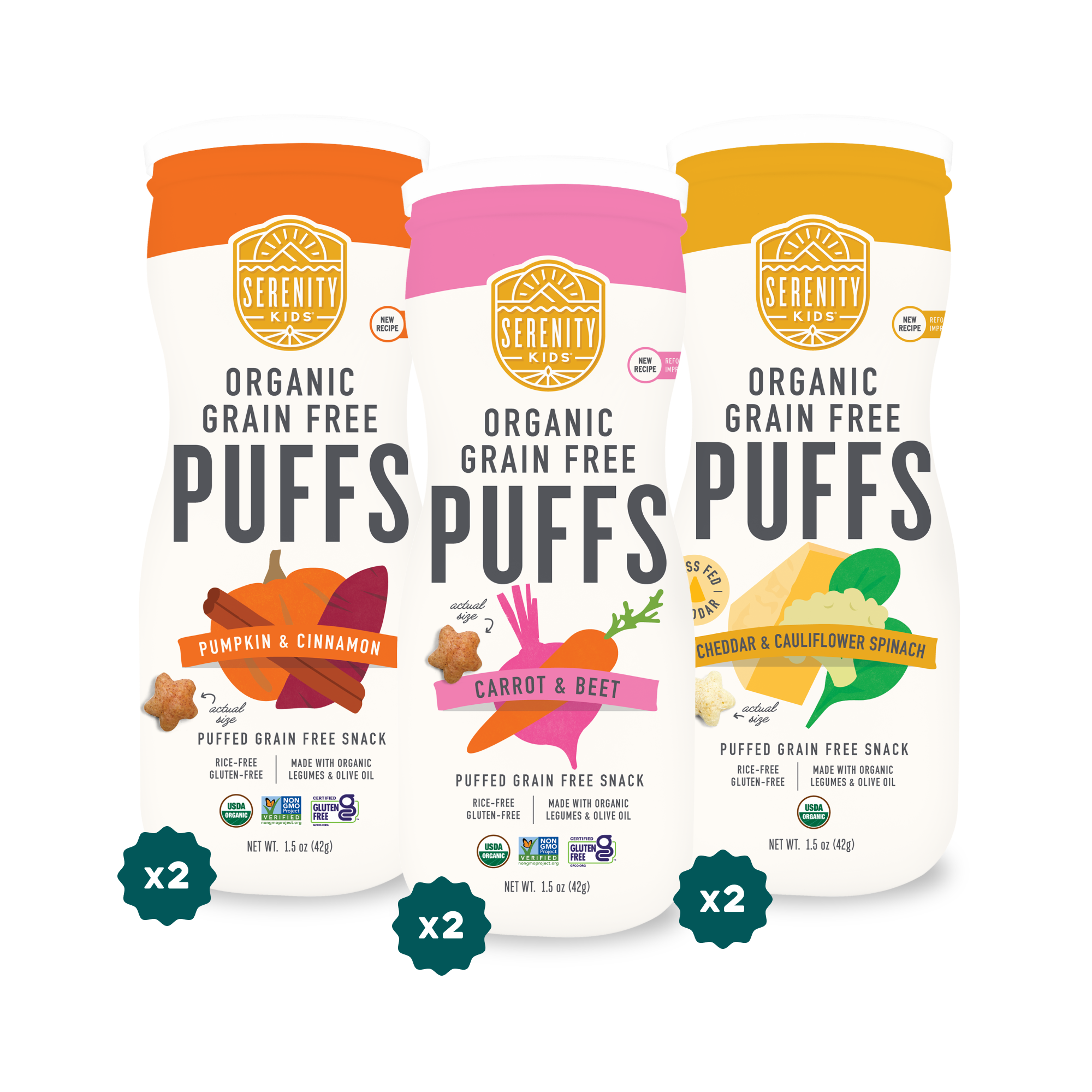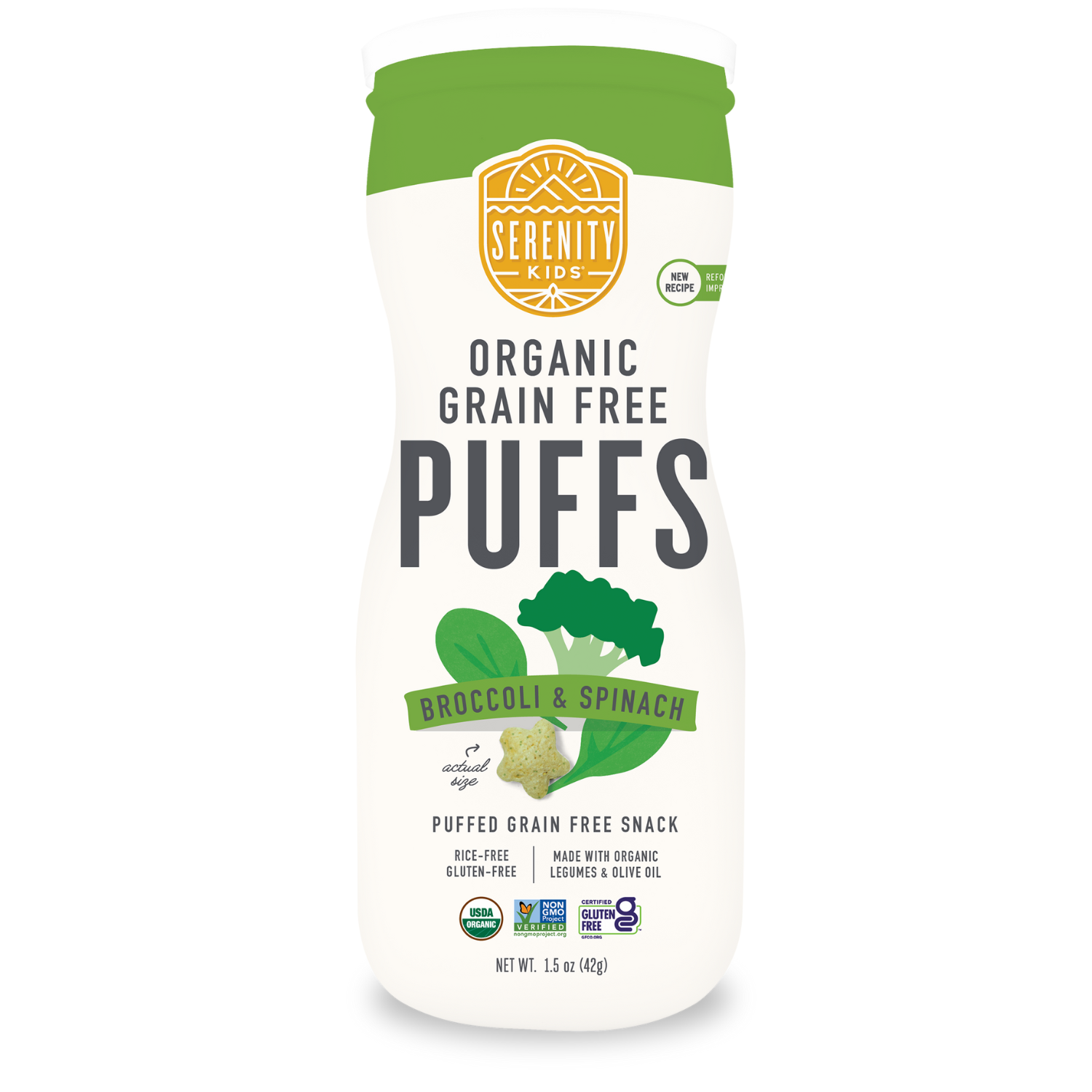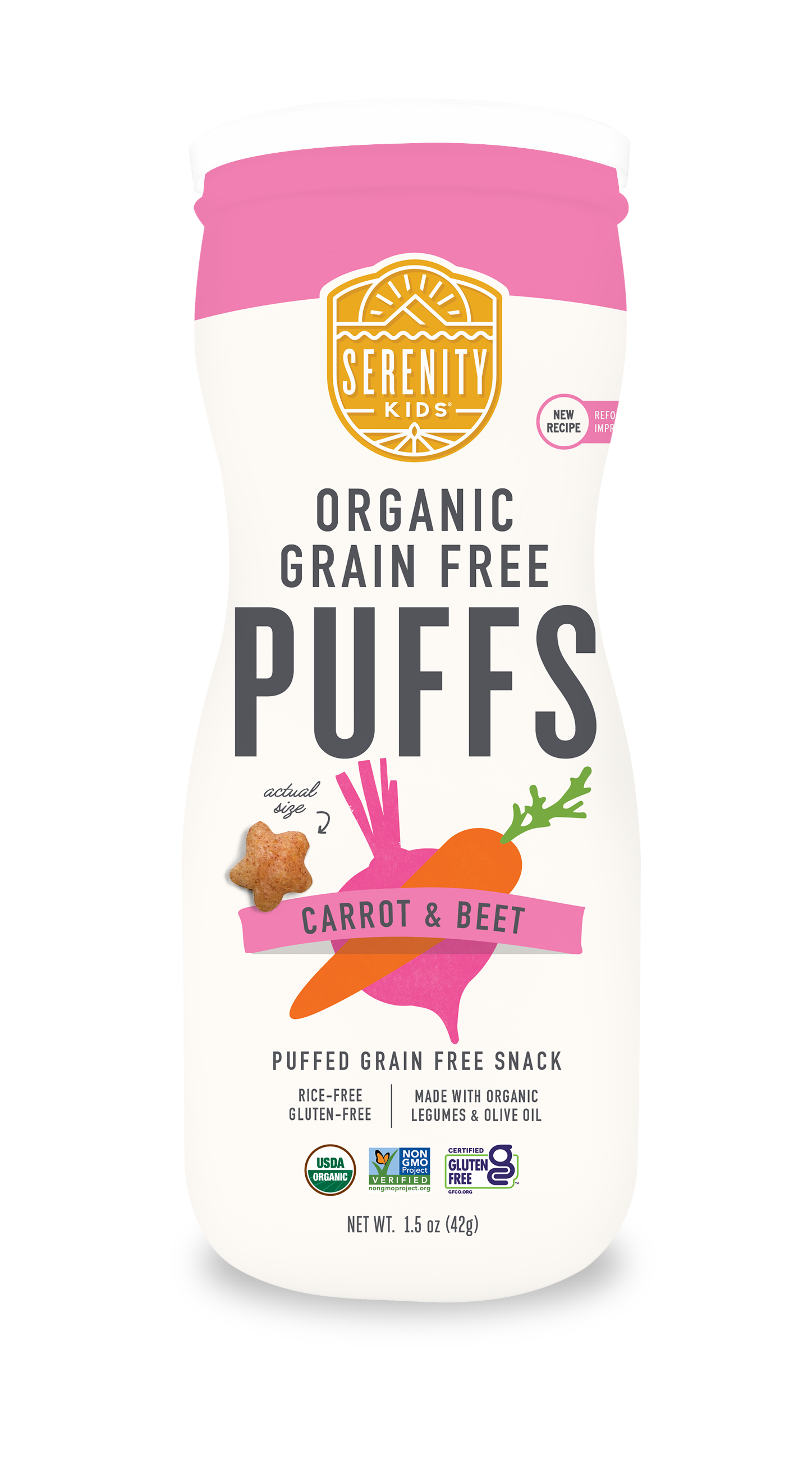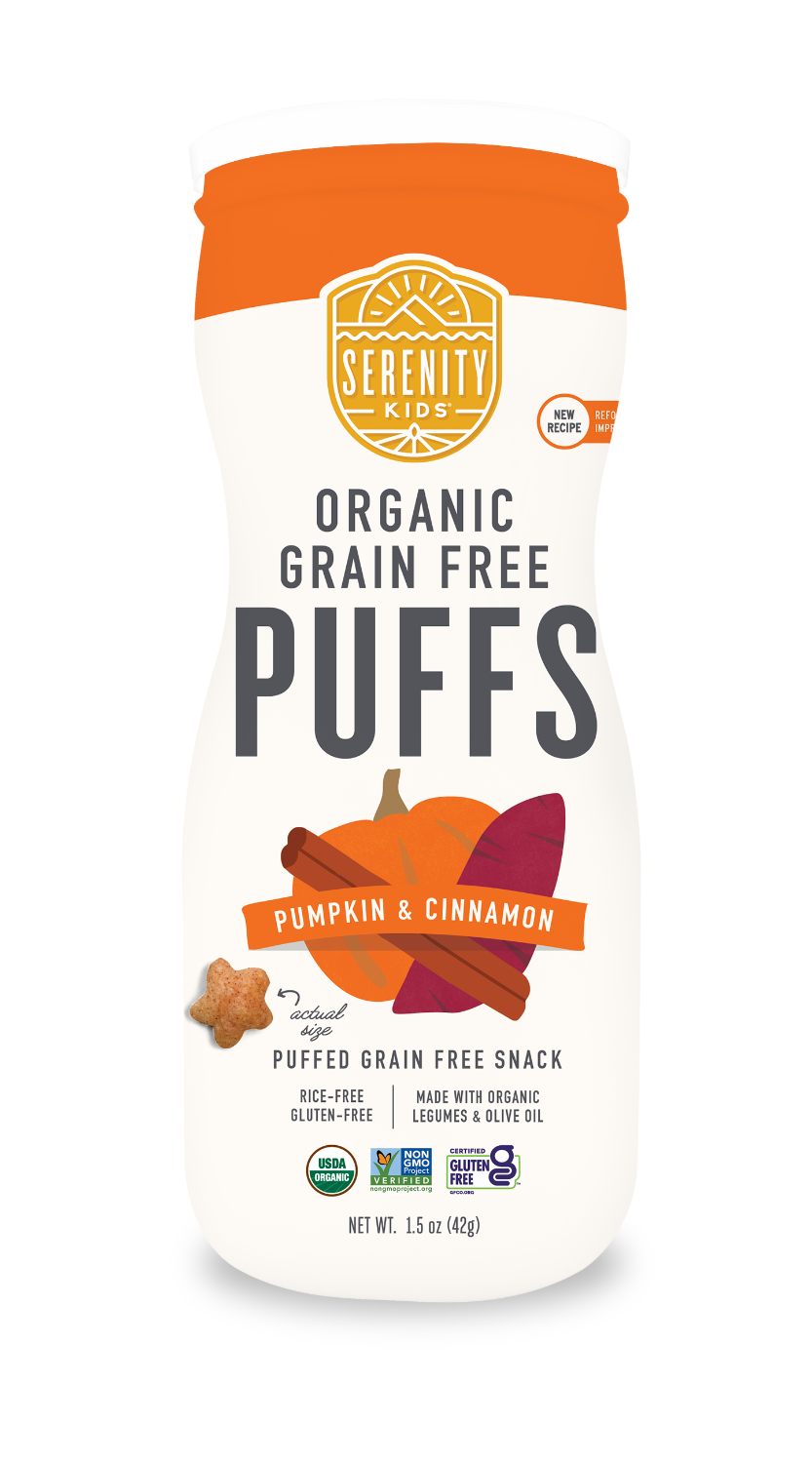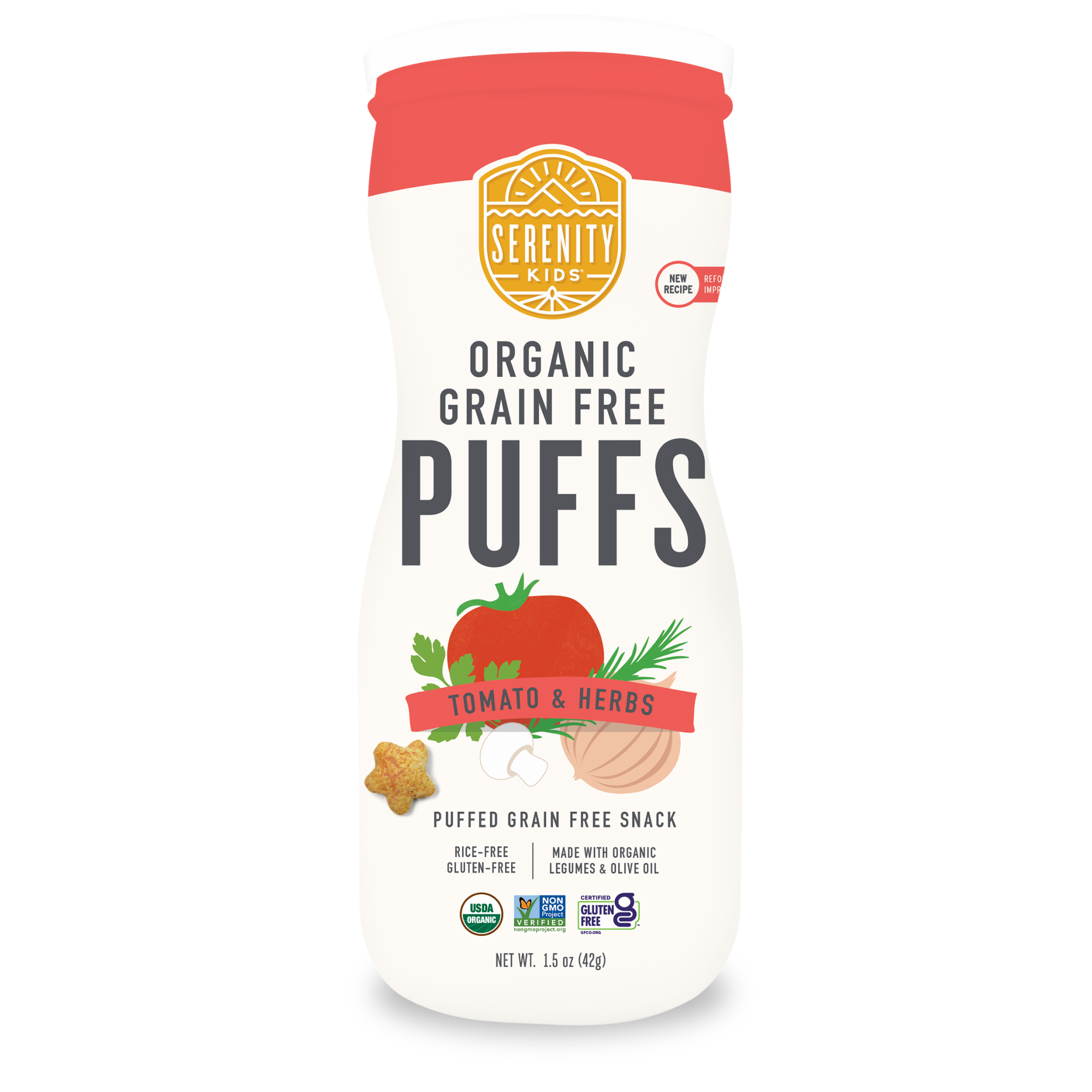As your little one enters the exciting toddler phase, you might notice mealtimes evolving into something new—sometimes smooth, other times a bit more challenging. Between their growing independence and fluctuating appetites, figuring out how to provide balanced, nutritious meals can feel overwhelming.
But mealtime doesn’t have to be complicated. With a flexible feeding schedule that caters to your 1-year-old's needs, you can ensure they’re getting the right mix of nutrients without the stress. In this post, we’ll guide you through simplifying mealtime by creating a balanced feeding schedule that’s both adaptable and easy to follow. From meal prep tips to toddler-friendly snacks, we’ve got you covered with practical ideas that keep nutrition at the forefront.
Plus, Serenity Kids products are here to help make the journey a little easier. With their range of nutrient-dense, easy-to-serve foods, feeding your 1-year-old has never been simpler. Let’s dive into how to make mealtime more manageable and enjoyable for both you and your toddler.
Introducing a balanced feeding schedule for your 1-year-old can be a great way to support their growth, health, and comfort as they transition to eating more solid foods. At this stage, toddlers begin to explore a variety of tastes and textures, building the foundation for healthy eating habits that can last a lifetime. Here, we’ll cover everything you need to know, from the types of food to include in meals to sample feeding schedules, morning and afternoon snacks, milk transitions, and handling picky eating.
Building a Balanced Feeding Schedule: Key Considerations
A well-rounded 1-year-old feeding schedule can benefit your child in many ways, providing structure and ensuring they receive the right balance of nutrients throughout the day. Here are a few things to keep in mind:
-
Balance and Variety: Incorporate foods rich in protein, fats, carbs, vitamins, and minerals to help your toddler thrive. A balanced diet promotes healthy growth and supports cognitive and physical development.
-
Hydration: Encourage your toddler to drink water regularly, especially during meals and snacks, as this supports digestion and hydration without adding extra sugars or calories.
-
Flexible Routine: Try to follow a structured schedule for meals and snacks, but stay flexible to adapt based on your toddler’s hunger cues. Their appetite can vary due to growth spurts, energy levels, and activity.
Understanding Your Toddler’s Changing Relationship with Milk
Milk continues to be an essential part of your 1-year-old’s diet, providing nutrients like calcium and Vitamin D that support bone growth and general development. During this period, many parents start gradually transitioning from breastfeeding or baby formula to cow’s milk. Typically, whole milk is recommended because it contains the healthy fats necessary for brain development. For toddlers, 16 to 24 ounces per day is often appropriate, but this can vary based on their diet and overall nutrition needs.
Introducing milk through a straw cup or sippy cup encourages independence, although some parents choose to continue bottle feeding for a bit longer. For toddlers new to solid food meals, serving cow's milk separately, such as between meals, can help maintain their interest in table foods without getting too full on milk alone.
If you're wondering whether it’s too early to start weaning from breastfeeding, rest assured that both options—continuing to breastfeed or transitioning to cow’s milk—are beneficial. Your comfort, lifestyle, and your child’s feeding cues can guide you in this choice. For more information on introducing nutritious options, check out this guide to giving babies real food.
How to Encourage Healthy Eating Habits for Your 1-Year-Old
At one year old, children are often ready to begin trying a wider variety of solid foods and finger foods. Introducing textures and flavors at this stage can set the foundation for healthy eating habits. Foods that are rich in essential nutrients, such as protein, healthy fats, and vitamins, not only support growth but also develop their palate.
Here are some easy ways to promote balanced eating:
-
Offer a Variety of Foods: By including a range of nutritious foods at each meal, your toddler can explore different flavors, colors, and textures. This variety helps meet their nutritional needs and keeps mealtime interesting.
-
Model Healthy Eating: Toddlers love to imitate, so if they see you enjoying a meal with veggies and healthy proteins, they’re more likely to try them as well.
-
Avoid Pressure: Trying new foods can sometimes take time. Avoid pressuring them to finish everything on their plate, as this can make mealtime stressful. Let them explore foods at their own pace.
You may also find that establishing a mealtime routine helps them feel more comfortable and secure. For example, sitting in the same spot, singing a quick song before eating, or helping “prepare” (like choosing a plate) can make a difference in how they approach meals.
Dealing with Picky Eating and Appetite Fluctuations
Picky eating is a normal phase for many toddlers, often due to their evolving sense of independence and curiosity. It can be challenging to watch your child refuse foods they once enjoyed, but staying consistent and positive helps reassure them. Trying a few tips for picky eaters can be helpful:
-
Expose Them to New Foods Multiple Times: It may take several exposures for a toddler to warm up to a new food. If they refuse carrots today, try offering them again in a few days.
-
Rotate Their Favorite Foods: Balance their preferences with new choices by offering a beloved food alongside something new or less familiar, encouraging them to try a variety of nutritious options.
-
Make it Interactive: Toddlers enjoy feeling involved, so let them pick between two snack options or “help” you prepare their plate. This independence can boost their interest in trying the food.
When it comes to feeding a toddler, a division of responsibility between caregivers can be beneficial. This approach outlines who is responsible for which aspects of mealtime, helping to reduce stress and maintain consistency. For example, caregivers decide what and when food is served, while the child chooses how much to eat. This encourages self-regulation and a more positive feeding environment. For more information on setting up a balanced division of responsibility, check out this helpful guide.
If picky eating becomes a long-term challenge or affects weight gain or nutrient intake, consulting a feeding therapist can provide tailored strategies. A feeding therapist is a specialized professional, often an occupational or speech therapist, who helps children develop the skills needed for successful eating. They work with families to address issues like picky eating, feeding aversions, and difficulties with textures or swallowing, guiding children toward positive, healthy mealtime behaviors and age-appropriate food exploration.
Managing Appetite Fluctuations
Appetite changes are common at this stage, often tied to growth spurts and activity levels. A toddler who’s an eager eater one day might barely touch their food the next. Offering small snacks between meals can keep their energy up and provide additional nutrients without overfilling them.
Responding to their fullness cues is key—if they turn away or seem disinterested, it’s best not to push. Instead, try offering a small snack later. For very early risers, an early morning snack like a few banana slices or dried apricots before breakfast can help bridge the gap until mealtime.
Sample 1-Year-Old Feeding Schedule: Flexible Meal Planning
A reliable 1-year-old feeding schedule can provide structure while remaining flexible to meet their changing appetite. Here’s an example:
7:00 AM - Breakfast
-
Protein, such as scrambled eggs or cottage cheese
-
Fruit, like chopped berries or a banana
10:00 AM - Morning Snack
-
Cheese or yogurt for added protein
12:00 PM - Lunch
-
Cooked veggies and a protein, like shredded chicken
-
A small serving of whole milk in a straw cup
3:00 PM - Afternoon Snack
-
Slices of avocado or nut butter on apple slices
6:00 PM - Dinner
-
Balanced plate with protein, veggies, and a whole grain
Pre-Bedtime Snack: (if needed) A few healthy foods like a banana slice or plain yogurt
How Much Food Does a 1-Year-Old Need?
Toddlers’ serving sizes are generally smaller than adults or even older children. Here’s a quick guideline on typical serving sizes:
-
Protein: About 1 ounce or the size of a toddler’s palm
-
Vegetables: A few tablespoons, depending on preference
-
Fruits: A small handful, such as ¼ cup berries
-
Dairy: ½ cup of milk or a few cubes of cheese
Serving age-appropriate pieces and encouraging self-feeding helps them enjoy mealtime without feeling overwhelmed.
Introducing and Serving Water
Encouraging your toddler to drink water is another healthy habit to introduce. Toddlers should drink water throughout the day, especially with meals and snacks, to support hydration without adding extra calories or sugars.
Using a sippy cup or open cup for water fosters independent drinking and promotes coordination. Sipping water after eating can help keep your toddler hydrated and is a great step toward creating balanced drinking habits.
Navigating Meal Plans for Different Family Routines
Every family has a unique routine, and adjusting your toddler’s meal plan to fit your lifestyle can make daily schedules easier. Some families find that sticking to a specific time works best, while others adopt a more adaptable approach based on cues. Either way, consistency is helpful, and setting an order to mealtimes (breakfast, morning snack, lunch, etc.) reinforces the routine.
For picky eaters or toddlers with smaller appetites, adjusting portions or adding a third snack mid-morning or afternoon can keep them energized without creating pressure at regular meals. By allowing them to eat foods they’re familiar with alongside new options, parents can create a balance that encourages healthy eating habits.
Supporting Healthy Weight Gain and Growth Milestones
At 1 year old, growth can vary widely among toddlers, making it important to focus on nutrient-dense foods for healthy weight gain. Foods that contain both calories and nutrients—such as avocado, whole milk, and nut butters—provide energy and support growth without the need for high volumes.
If your child is naturally petite but developing well, this is often completely normal. Consulting with your healthcare team about weight and nutritional needs can ensure your toddler is on track, and they can guide you if any dietary adjustments are necessary.
Key Nutrients for a 1-Year-Old’s Diet
To support your toddler’s development, aim to include foods rich in these essential nutrients in their daily meals:
-
Iron: Iron is essential for brain development and red blood cell production, which helps deliver oxygen throughout your child’s body. Toddlers can get iron from foods like lean meats, chicken, turkey, beans, lentils, and iron-fortified cereals. Pairing iron-rich foods with a source of vitamin C, such as berries or citrus fruits, can boost absorption.
-
Calcium and Vitamin D: Both calcium and vitamin D play a crucial role in bone growth and development. Whole milk is a popular source for toddlers, along with yogurt and cheese. Additionally, leafy green vegetables like kale and broccoli contain calcium. Vitamin D can be tricky to get from food alone, so fortified dairy products and a bit of safe sun exposure (when possible) are also beneficial.
-
Protein: Protein supports muscle growth, tissue repair, and overall development. Including protein-rich foods like lean meats, eggs, yogurt, cottage cheese, beans, and even tofu can provide a variety of flavors and textures for your toddler to explore. Toddlers’ portions can be small but consistent; try adding these to meals throughout the day.
-
Healthy Fats: Fats are essential for brain development, energy, and nutrient absorption. Foods like avocado, full-fat dairy products (like cheese and yogurt), nut butters (opt for smooth, unsweetened varieties for safety), and fatty fish like salmon provide valuable fats that fuel active toddlers and promote brain health.
-
Fiber: Fiber helps support digestion, regulate bowel movements, and keep your little one feeling fuller for longer. Include fiber-rich foods like fruits, vegetables, nuts, seeds, and legumes. Finger foods like small chunks of steamed veggies or soft fruits are great ways to incorporate fiber while encouraging self-feeding skills.
-
Organ Meats: Often overlooked, organ meats are a rich source of vitamins and minerals, including iron, vitamin A, and B vitamins, which are essential for growth and development. Small amounts of organ meats like liver can be incorporated into your toddler's diet to provide a nutrient-dense boost. For more insights on how to include organ meats in their meals, check out our guide on how to feed your kids organ meats.
These nutrients help ensure a balanced diet that aligns with a 1-year-old’s developmental needs. Offering a mix of finger foods and toddler-friendly snacks like whole milk yogurt with chopped fruit, whole-grain crackers with nut butter, or cooked vegetables not only makes mealtime fun but also ensures they’re getting these crucial nutrients daily.
Tips for a Successful Feeding Journey
-
Offer positive reinforcement and avoid pressure during mealtimes
-
Let your toddler explore food with their hands and don't rush them or try to prevent them from making a mess
-
Be patient and consistent with offering a variety of foods
-
Keep an eye on milk consumption, as too much milk can make your toddler feel full and not want to eat solid foods
-
Look for their fullness cues and trust what they naturally eat
-
Remember that toddler appetites vary with growth spurts and other factors
Common Questions on Toddler Feeding
Q: How can I tell if my toddler is eating enough?
A: Appetite can vary greatly from day to day, which is completely normal. Look for signs of contentment and energy in your toddler. If they seem satisfied after meals, grow steadily, and maintain energy levels, they’re likely eating enough.
Q: Should I be concerned if my toddler skips a meal?
A: It’s not unusual for toddlers to skip meals occasionally due to lower appetite, distractions, or simply being too full from a previous snack. Skipping a meal here and there is typically fine, especially if they’re eating well at other times. Aim to offer a balanced snack later to make up for it.
Q: How many snacks should my 1-year-old have per day?
A: Two to three snacks is generally a good number, spaced out between meals. These mid-morning, mid-afternoon, and sometimes pre-bedtime snacks keep energy levels stable and provide important nutrients.
Q: Can my toddler have added sugars?
A: It's recommended to limit added sugars at this age to support healthy eating habits. Focus on natural sources of sweetness, like fruits and vegetables, instead of sugary snacks or drinks.
Q: When should I introduce an open cup?
A: Many parents start introducing an open cup around 12 months. It may take practice, but it helps toddlers learn coordination and drinking skills. A small, spill-proof open cup can make this transition easier.
Creating a 1-year-old feeding schedule that includes nutrient-dense foods, hydration, and flexible routines can empower your toddler to thrive. By following cues, adapting as needed, and offering a mix of familiar and new foods, parents can foster a positive and balanced approach to eating that will serve as a foundation for healthy habits in the years to come. Check out all of the nutritious, convenient options offered by Serenity Kids!

